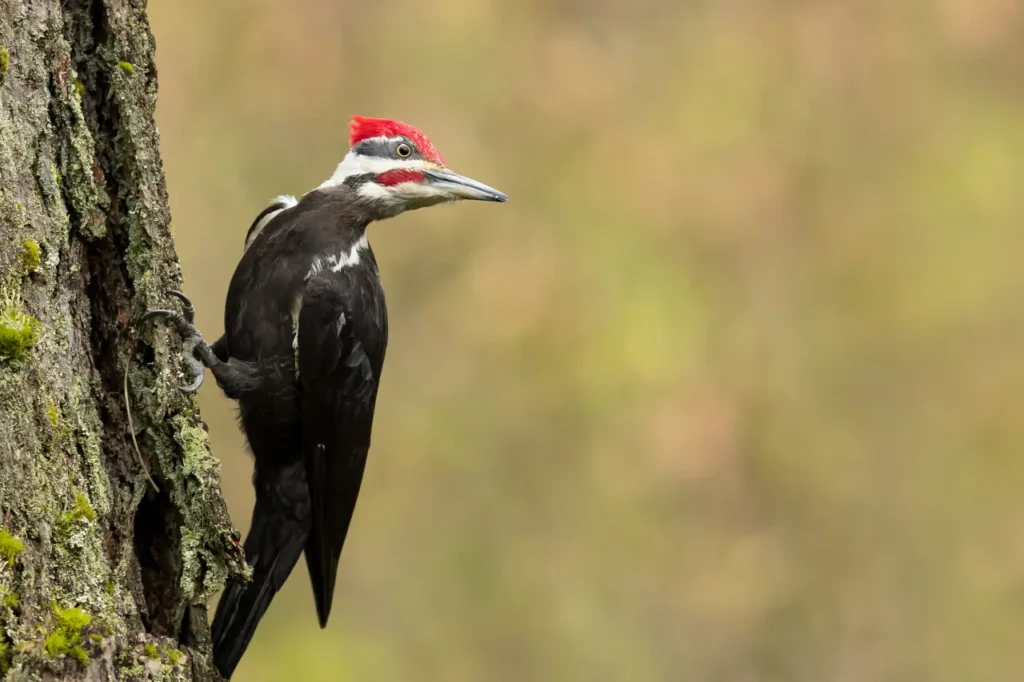
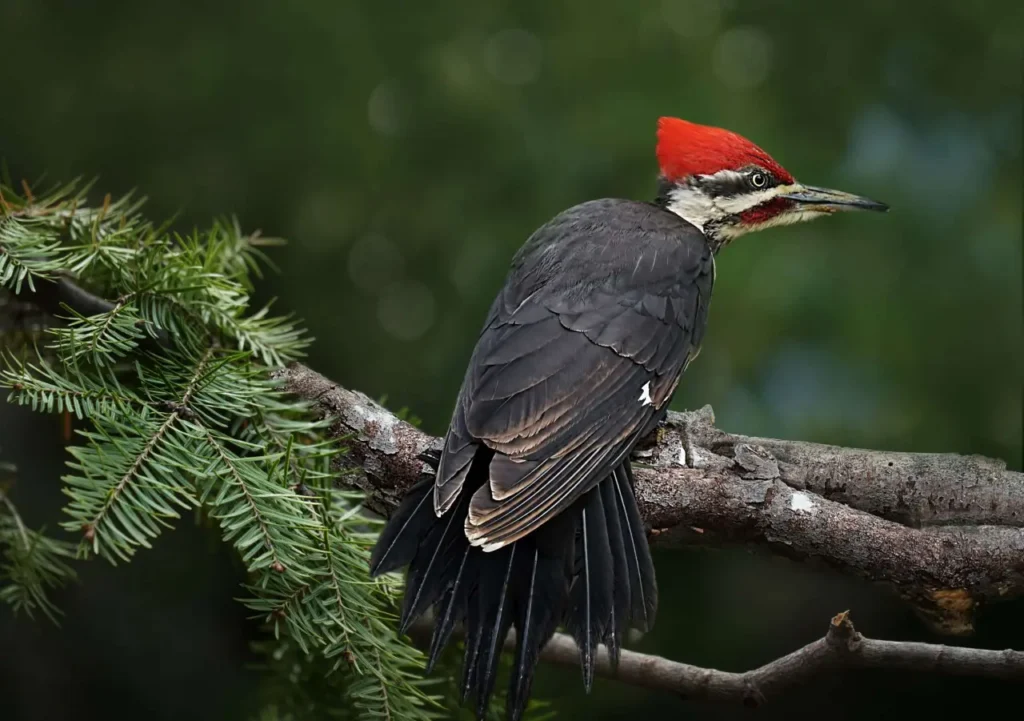
The Pileated Woodpecker claims the title of North America’s largest woodpecker species, measuring a remarkable 16 to 19 inches in length, crowned by its striking crest. Its plumage predominantly boasts a rich black hue, adorned with captivating white stripes cascading along its neck and flanks. The hallmark feature of the Pileated Woodpecker is its commanding red crest, imparting an almost primeval aura to the bird’s appearance. While both males and females sport crests, in males, the crest extends to the nape, whereas in females, it culminates at the forehead.
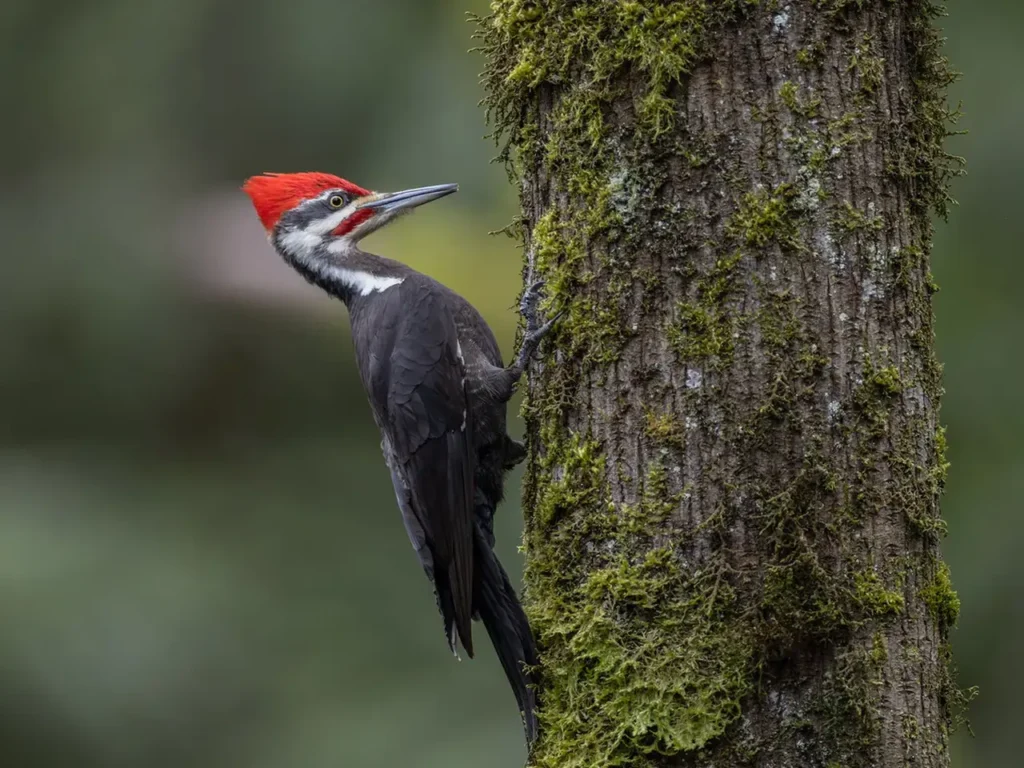
Adept foragers, Pileated Woodpeckers specialize in locating and extracting insects and larvae from trees. Their robust, chisel-like bills equip them to chip away at bark and wood, revealing their concealed prey. The distinctive “rectangular” holes they create in tree trunks often serve as telltale markers of their feeding endeavors. Their dietary repertoire extends to encompass fruits, nuts, and occasional small vertebrates.
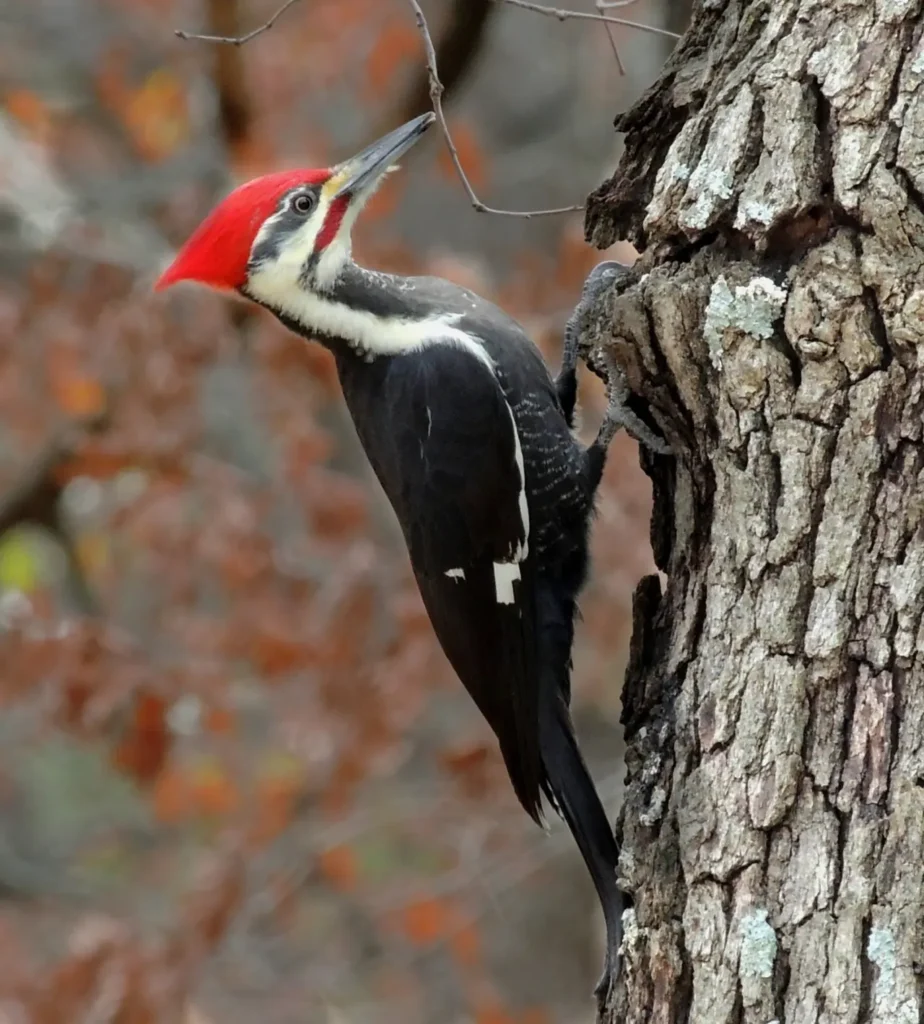
One of the most distinguishable facets of Pileated Woodpecker behavior is their resonant and vigorous drumming calls. Achieved through rapid and repetitive hammering of their bills against hollow tree trunks, this drumming serves multiple functions – marking territory, attracting potential mates, and facilitating communication with fellow woodpeckers.
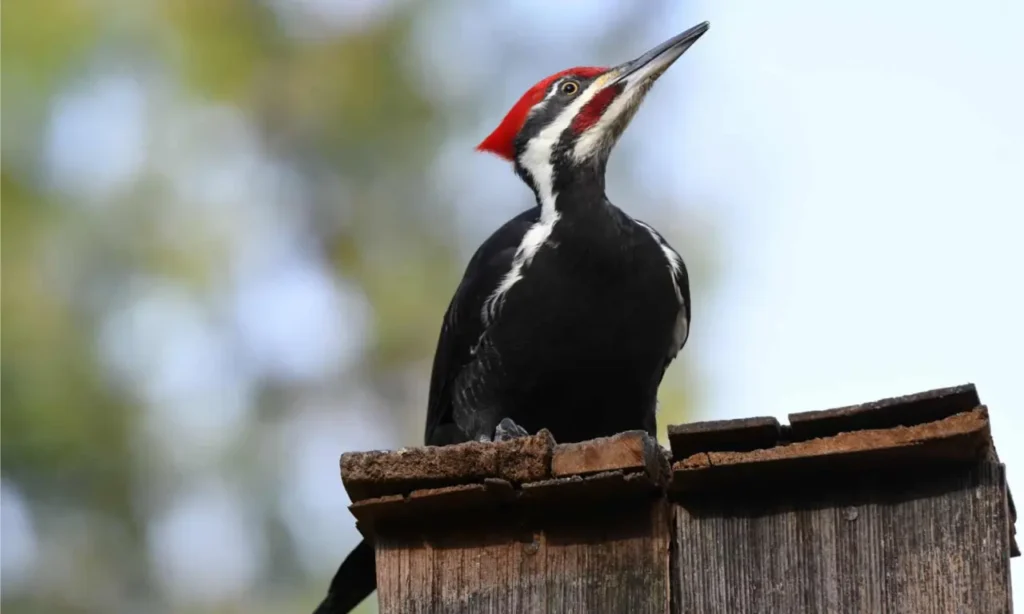
Pileated Woodpeckers inhabit a diverse range of forested habitats, spanning deciduous and mixed woodlands, as well as wooded expanses bordering wetlands. Their presence graces the expanse of North America, spanning from the eastern United States to parts of Canada and extending into the Pacific Northwest.
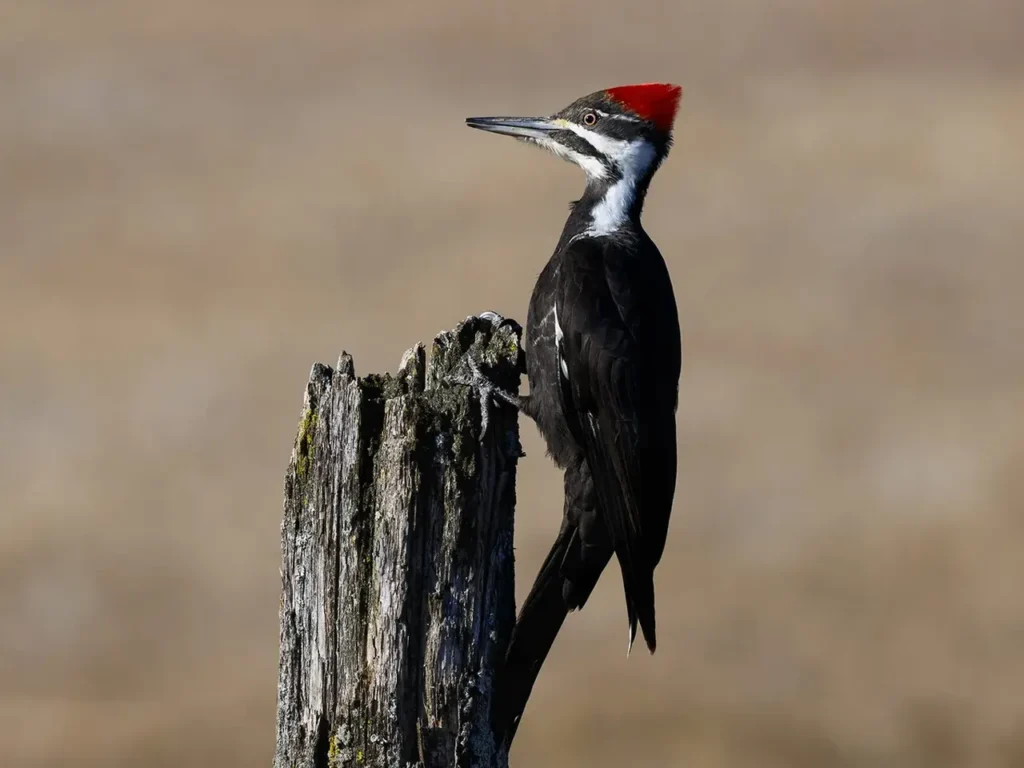
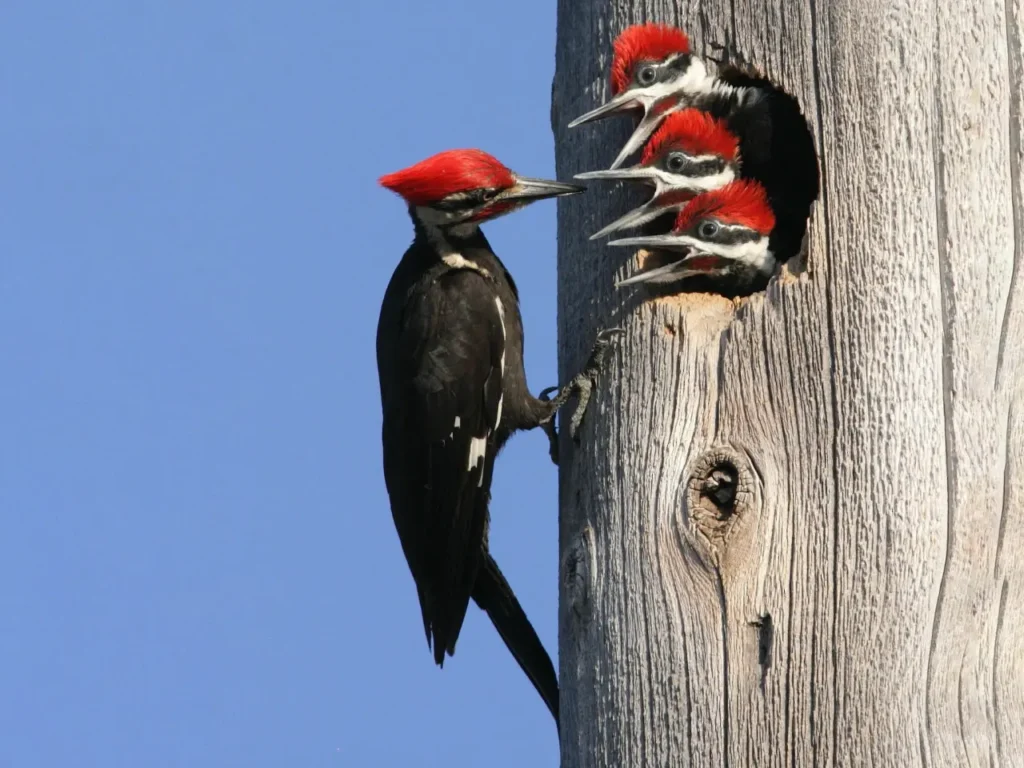
Pileated Woodpeckers hold cultural importance within various indigenous traditions across North America. Their distinctive calls, resplendent plumage, and rhythmic drumming have inspired narratives, myths, and artistic expressions.
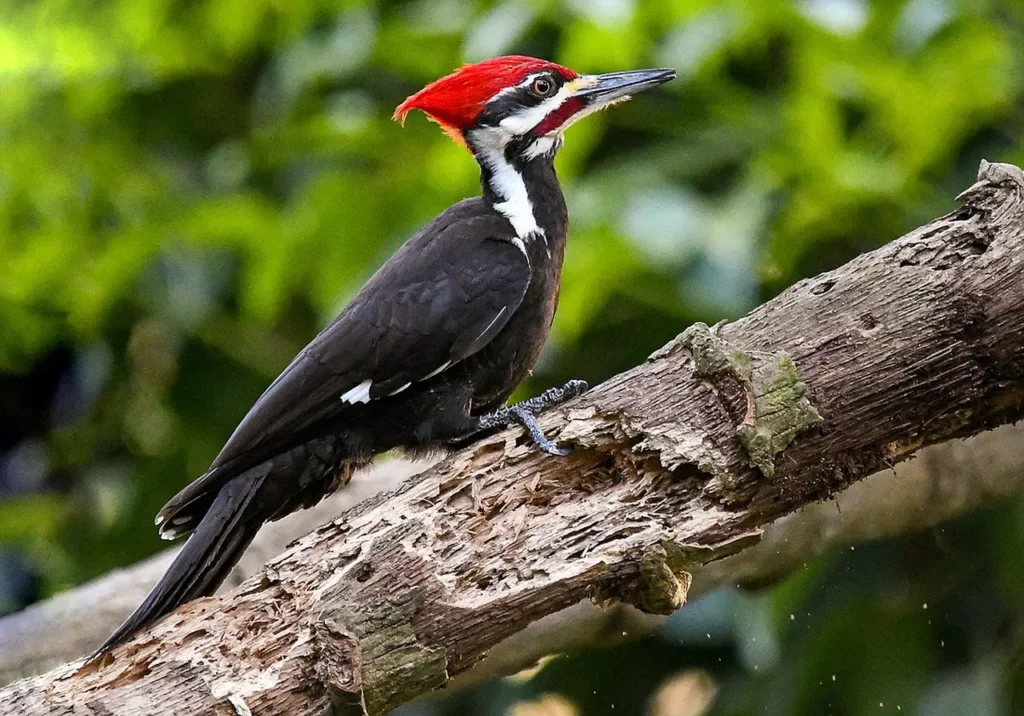
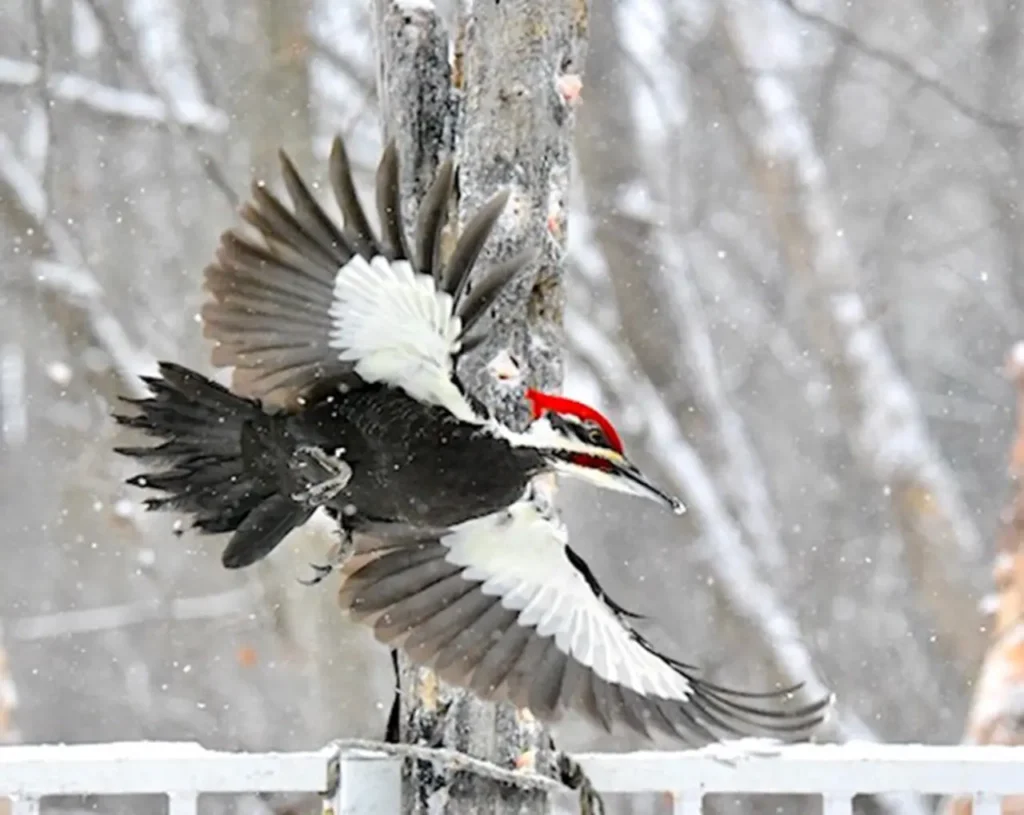
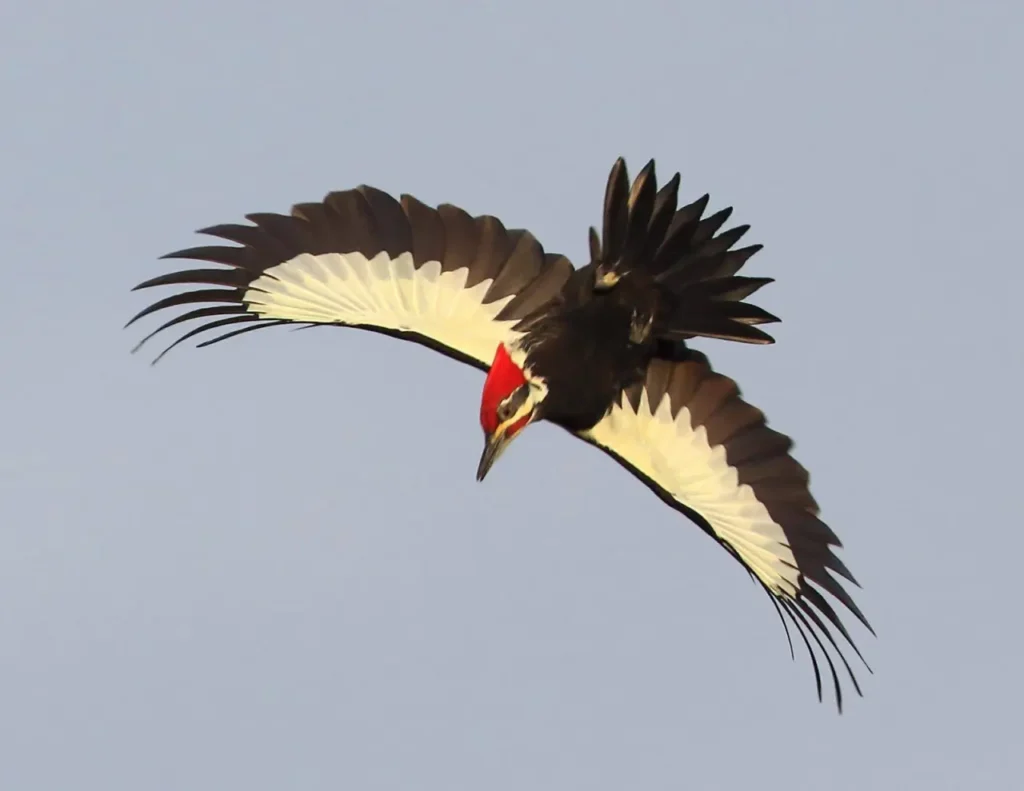
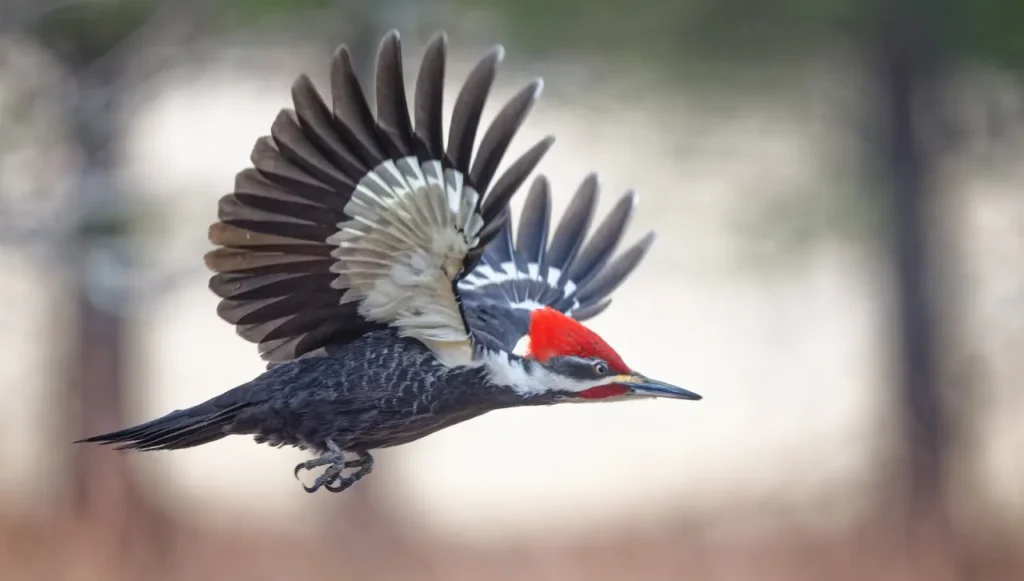
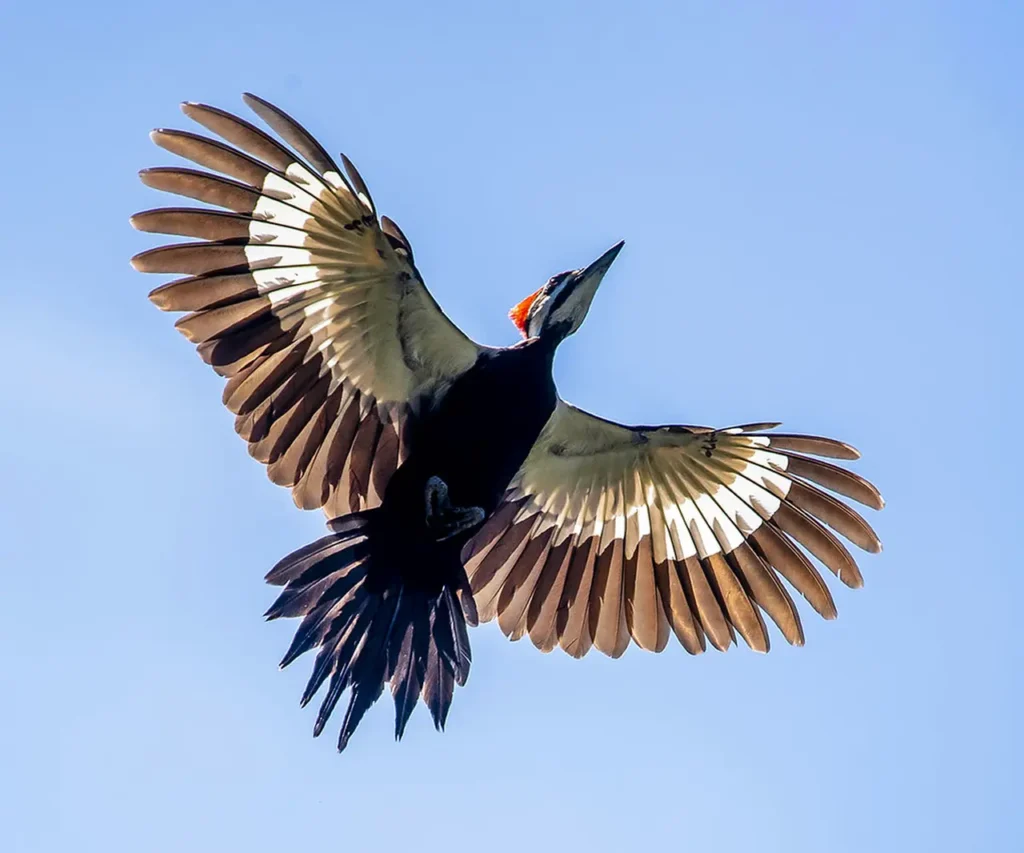
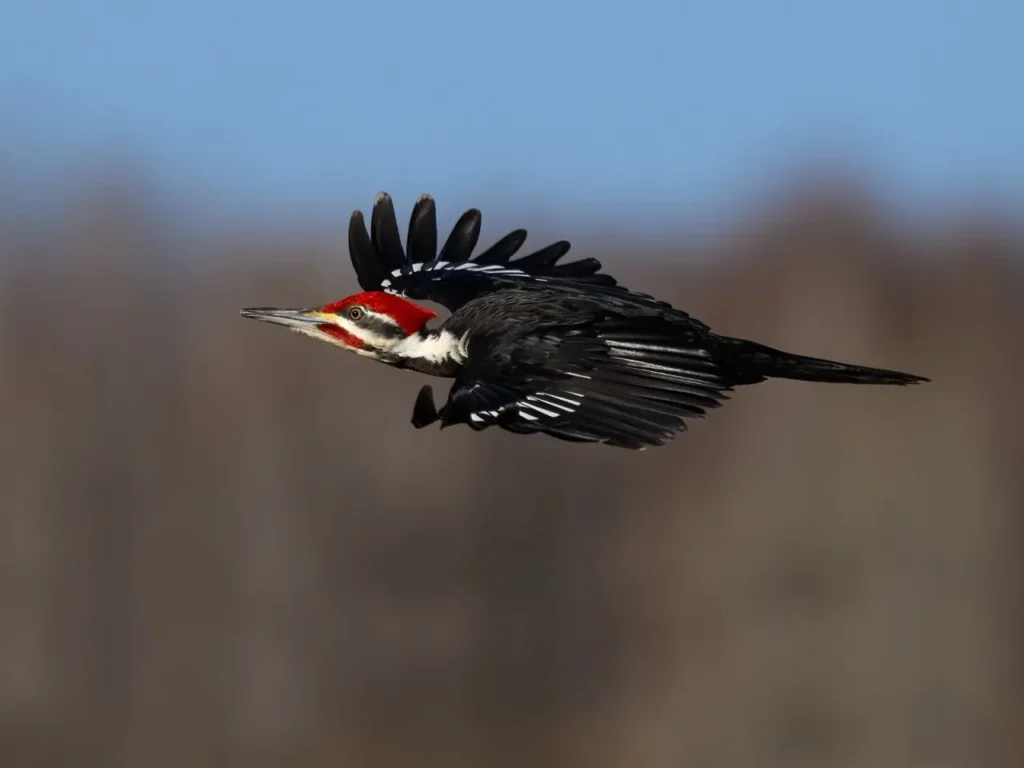
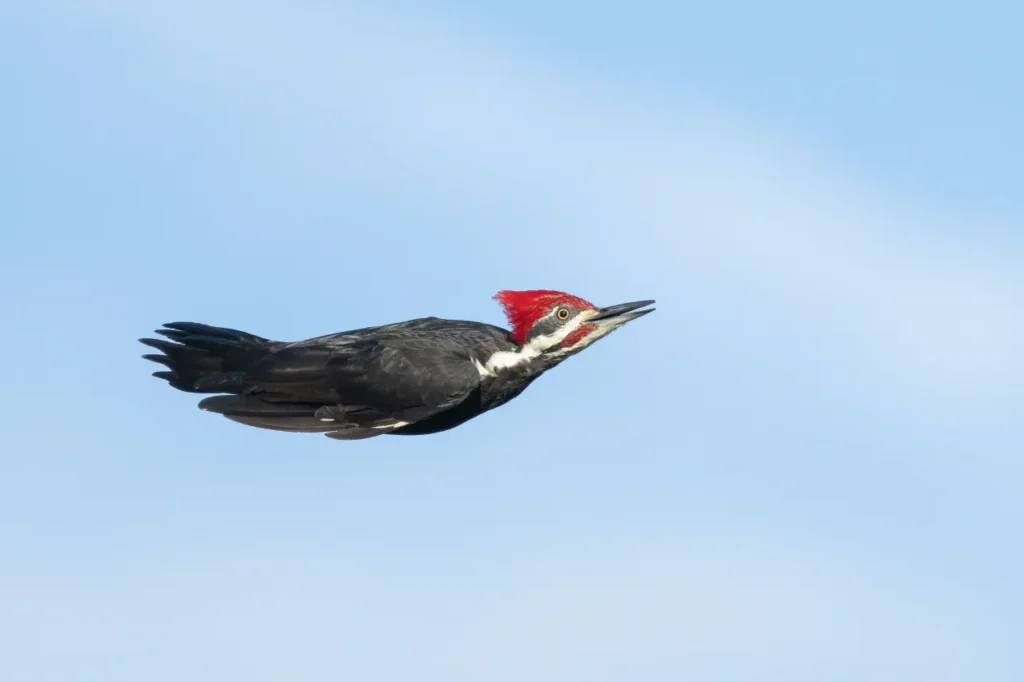
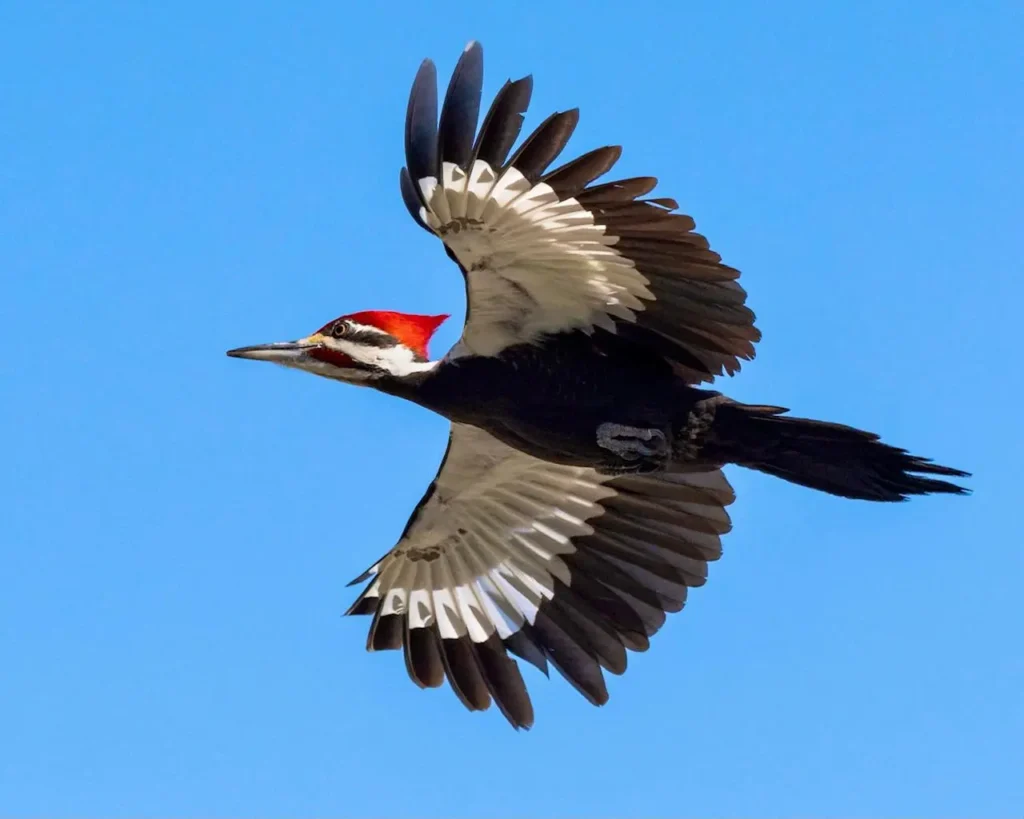
Incorporating majestic dimensions, distinct characteristics, and rhythmic drumming, the Pileated Woodpecker epitomizes the essence of North America’s wild and resilient forests. Its role in preserving ecosystem equilibrium and its captivating existence underscore the interwoven nature of all life forms. By celebrating and safeguarding the habitats that nurture the Pileated Woodpecker, we pay homage to nature’s splendor and contribute to the safeguarding of the diverse avian tapestry that enriches our world.


